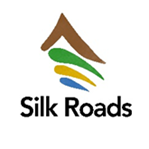Digitising endangered archaeological heritage in Central Asia
18 February 2019
The Central Asian Archaeological Landscapes (CAAL) project has been launched at the UCL Institute of Archaeology, dedicated to the digitisation of archaeological heritage across this vast region – one that stretches from the Caspian Sea to western China.

The CAAL project has been made possible by the generosity of Arcadia – a charitable fund of Lisbet Rausing and Peter Baldwin.
From megacities to religious sites, from nomadic camps to burial mounds, from mountain forts to complex water management systems, there is an astounding range of archaeological heritage across Central Asia. While many of these sites are already protected by state legislation, a very significant number are not. A vast range of heritage is rapidly disappearing through recent urban expansion, changing agricultural practices, rural depopulation, and the effects of climate change.
The project will create an online digital inventory, adopting the open-source ARCHES inventory package developed by the Getty Conservation Institute and the World Monuments Fund. This will enable a better understanding of the full range of archaeological heritage distributed across the region, fostering its management and protection.
This exciting new project is led by Tim Williams (UCL Institute of Archaeology), who is Director of the International Research Centre for Silk Roads Archaeology and Heritage, a joint initiative between UCL Institute of Archaeology and Northwest University (NWU) School of Cultural Heritage and Culture, Xi'an, Peoples Republic of China; both institutions having a long history of Silk Roads archaeology and research. The CAAL project is a partnership between institutions from the Republic of Kazakhstan, Kyrgyz Republic, Republic of Tajikistan, Turkmenistan, Republic of Uzbekistan, and the People's Republic of China (Xinjiang Uyghur Autonomous Region). It also includes the International Institute for Central Asian Studies, based in Samarkand, and the ICOMOS International Conservation Centre Xi'an.
The multinational and multidisciplinary team will digitise existing archives and records, and in doing so will consolidate information held by regional institutions and research centres into a single multilingual catalogue. This will be enhanced by new research using a combination of high resolution photographic and satellite imagery, along with ‘on the ground’ field visits, in order to discover new sites, improve documentation, promote awareness and scholarship, and facilitate policy-making to better enable site and landscape preservation.
The project will create a shared space for archaeologists, architects, conservation professionals, as well as the wider public interested in the fascinating and varied archaeological heritage of Central Asia.
CAAL stories, tweets, blogs, videos and images all coming soon!
Further details
- CAAL on Twitter
- CAAL on Instagram
- Comments and enquiries to tim.d.williams@ucl.ac.uk and k.tewinkle@ucl.ac.uk

 Close
Close

